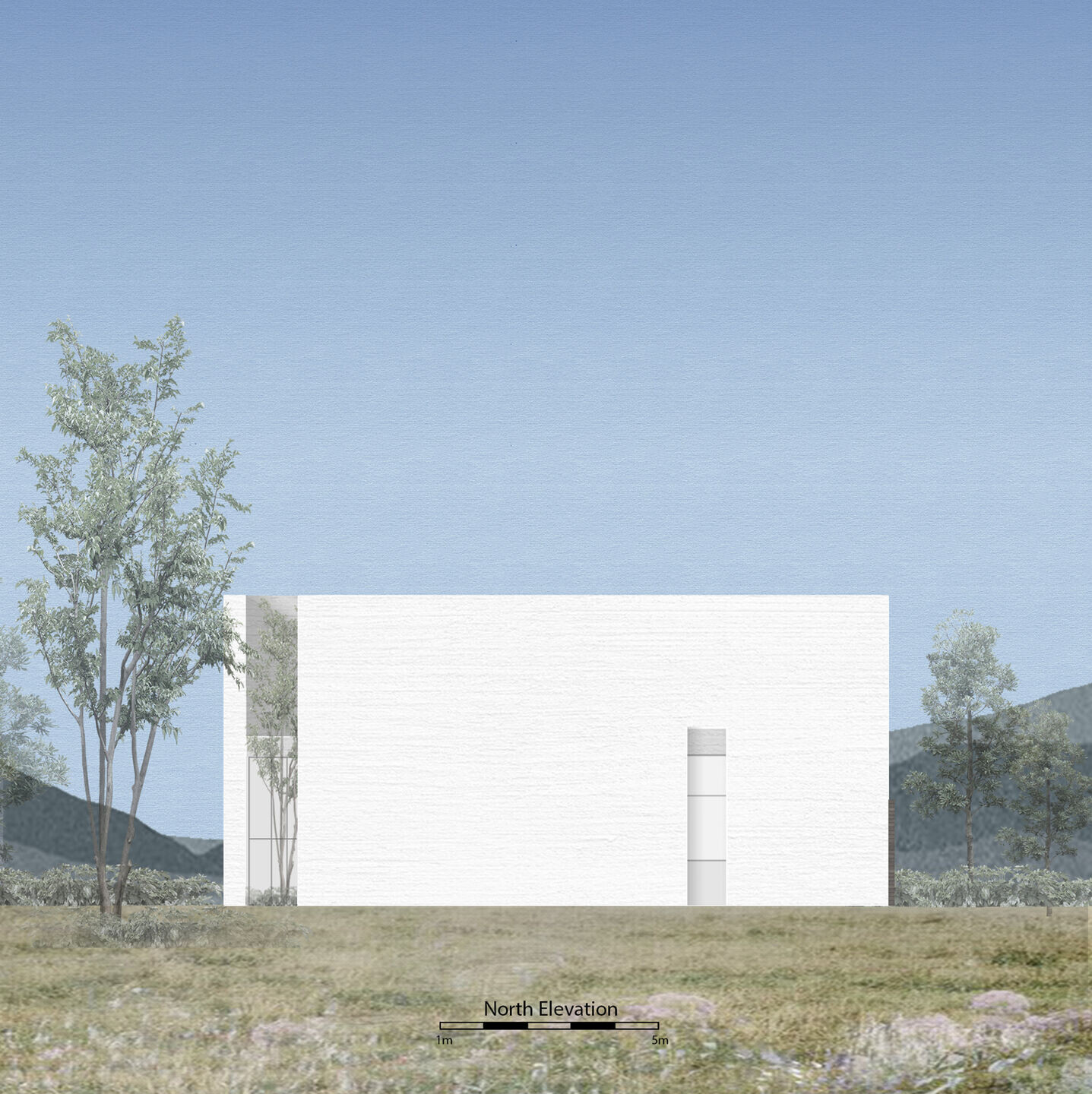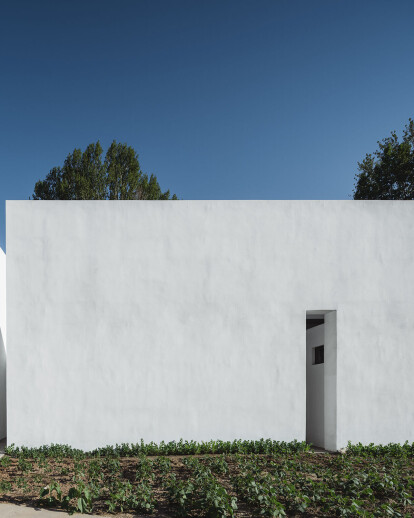Wutopia Lab designed Building 3 for Fortune Art Homestay, Xiyaotou Village, “Stangers”- Room with a rejected view, which was opened at the end of June 2021.

I have only had two experiences living in the countryside. The first experience was studying farming in Chongming farm for one month in my sophomore year of high school, and the second was living in a farmhouse in Wutai Mountain for one month in the summer of my sophomore year, which were my only two rural experiences on countryside. As I was saying, I am a stranger to the countryside.

In the four or five years before I designed this building, I did receive many invitations to do projects in the countryside. For various reasons, they were not implemented. But this gave me the experience to think about it. Looking back on these projects, I did not get rid of the influence of regionalism, trying to use the materials and constructions of the wooden roof frame, rammed earth, brick, concrete, and glass to create a kind of regional architecture that the architect sees as being appropriate for the countryside. But these buildings are strangers disguised as locals. It is a bit hypocritical to the locals. So, in this project in Xiyaotou Village, I confronted my identity as a stranger in the village and expressed a simple and direct gesture of how to understand or change the local landscape or activate local life as a stranger. It is a bit rash, but I consider the locals and strangers on an equal footing. So, I named this homestay design as “Strangers”.

My inspiration came from Magritte's surrealist painting "Le Calcul Mental". “Strangers" wants to create a surrealist picture in the local area. It would be very different from the city we are familiar with.
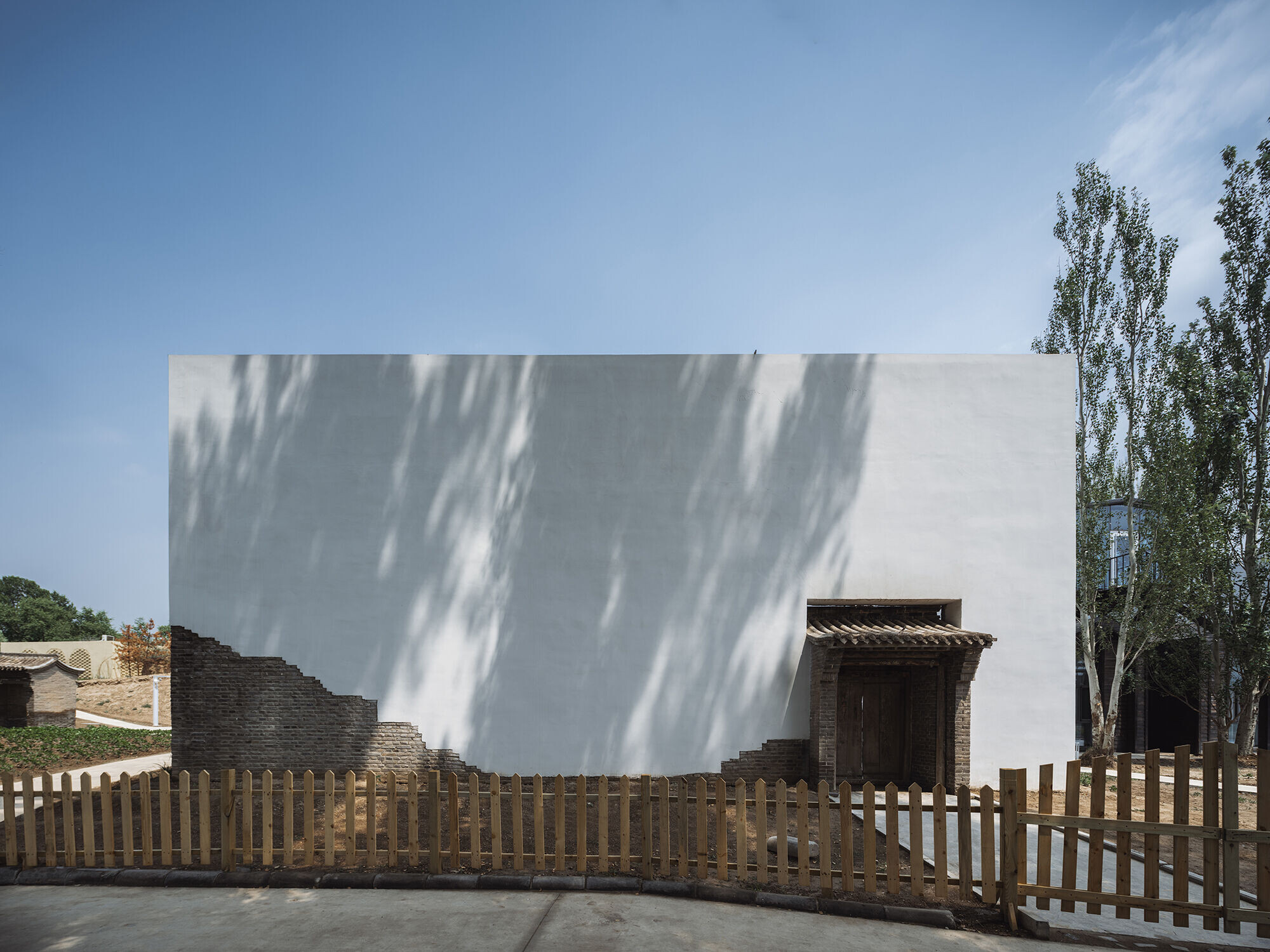
It is based on anthropological thinking. I noticed that the former dwellings in Xiyaotou village were surrounded by continuous walls. My design is just a reinforcement of this traditional type in this site. The village is a society of acquaintances, even if there are high walls between households, they cannot stop gossip. But as a homestay that receives outsiders (strangers) from the village, the stranger's sense of security sometimes has to be built in an enclosed environment and needs to create self-preservation. So, I raised the wall to 7 meters to create an image of complete independence. This wall, which may be interpreted differently by people, can be accepted by them in the end.

The architectural vein eventually becomes a muttering of materials, constructions, and formal symbols. The enclosed homestay rejects these mutterings. At the same time, the successive tall and closed walls also reject the view and the pleasantries of communication. Its purpose is to create a place that helps strangers to look inside. But there is another technical layer of an enclosed building. As someone who has lived in the north, they will ignore the local aspects of the landscape and weather. With strict cost control (government budget), the thick wall construction can create a warm living experience in winter and a cool living experience in summer with minimal use of electricity in terms of warmth and shade. This, in the end, was also confirmed by the villagers.
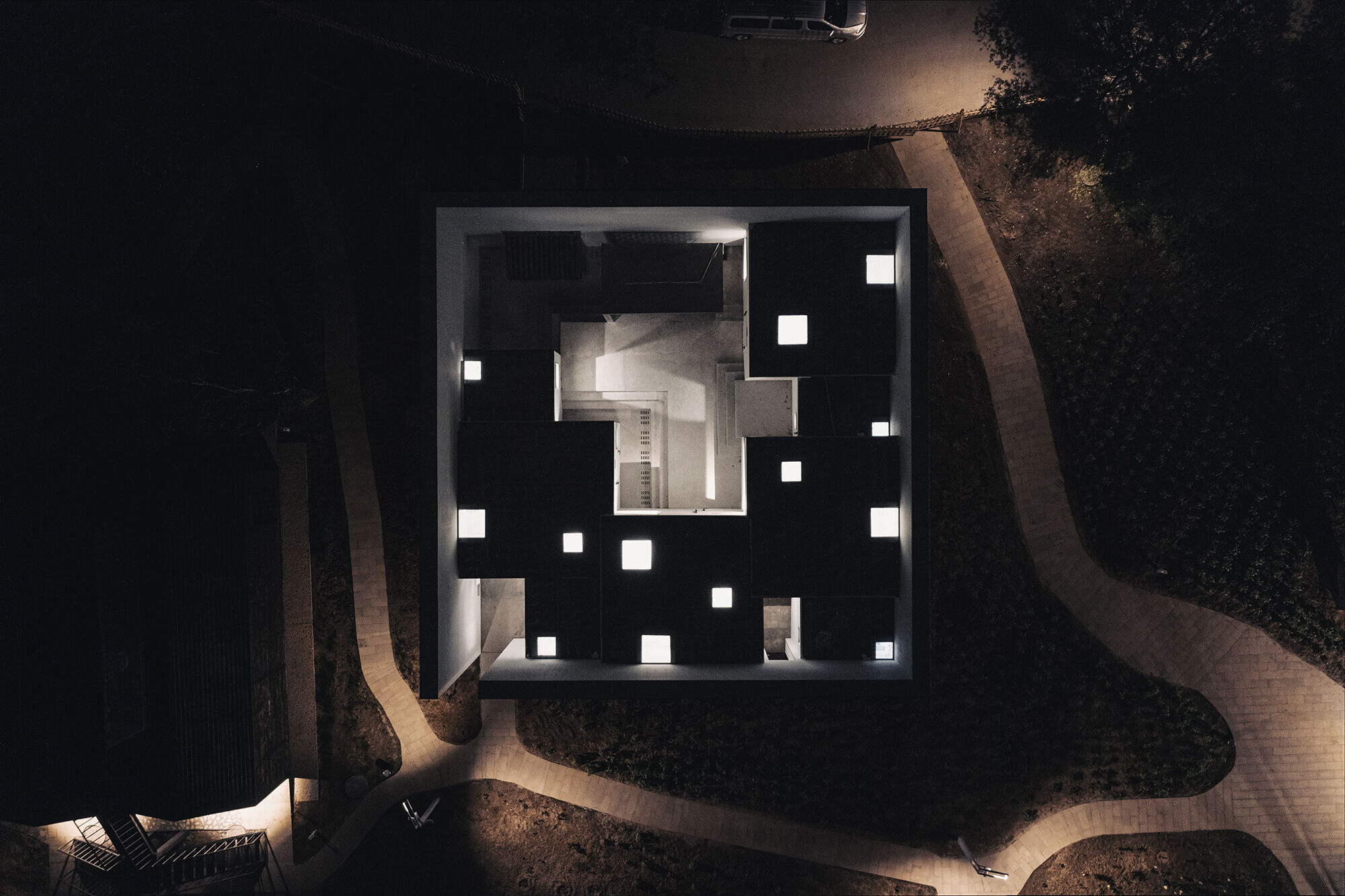
Most people are in the country for a brief period of relaxation. Sometimes it is reduced to mere visual relaxation. The scenery of Xiyaotou Village is rustic, but nothing special. I designed it from my own experience. When I was going through a tough time, closing my vision, and hiding in a shelter became my appeal. I am reminded that many Chinese and foreign historical figures also strengthened themselves through exile. I hope to escape from the world so that strangers who come to this village can find a place to breathe. In this room that rejects the view, the psychology of self-exile is used to build a deep inner view of relaxation and inspire confidence in the future.
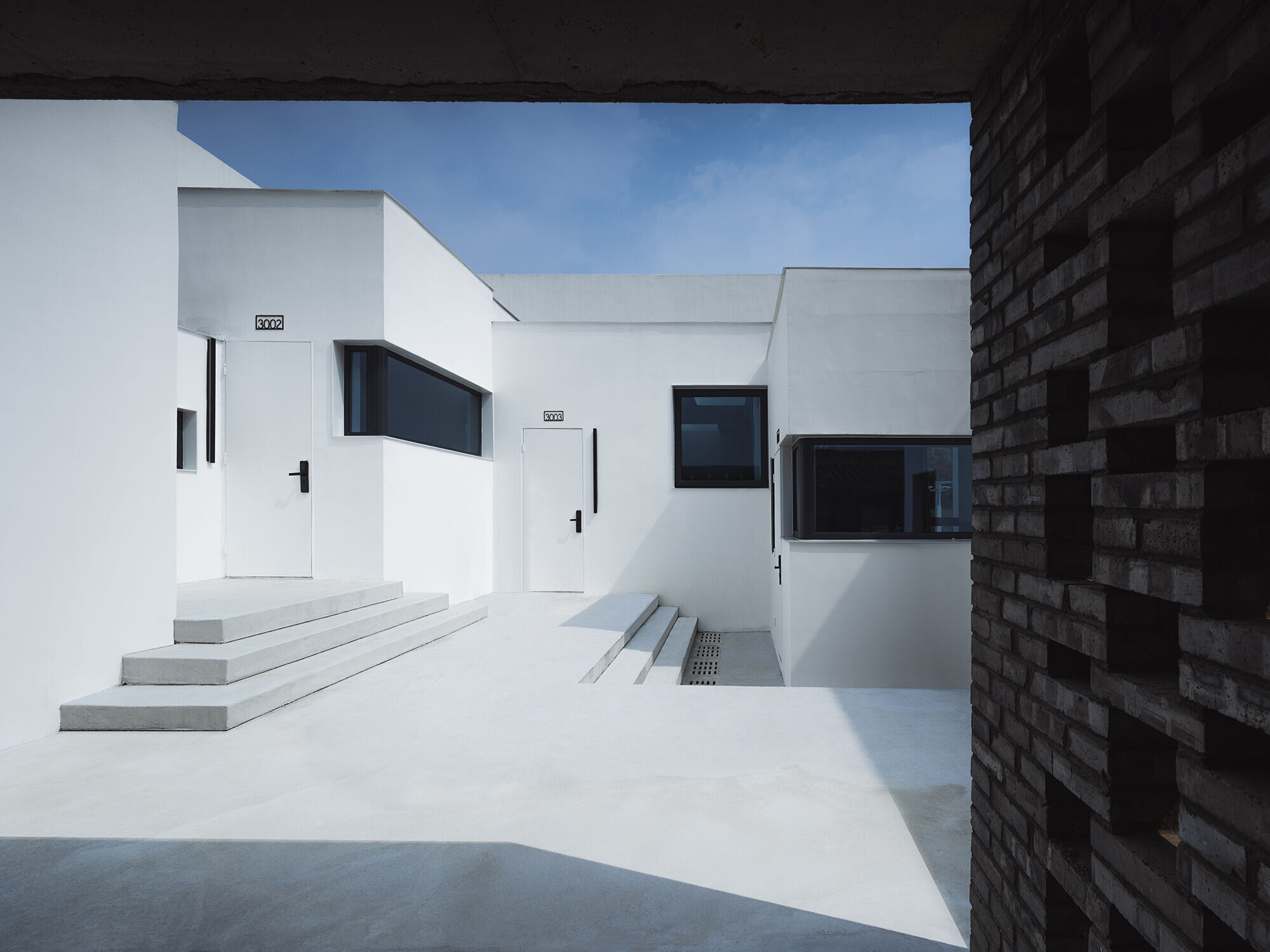
The prototype of this interior can be found in the numerous descriptions and paintings of the convent rooms. It seems more appropriate to call it a sanctuary rather than a prison. Since I wanted to construct an experience of self-exile, the interior needed to present the most simple and silent arrangement. All kinds of small arrangements to please people were eliminated, including the clock. This is a place to re-experience time, as the occupant can only estimate the approximate time by the change of natural light. To be precise, the experience of time takes you back to the old days, the blurred feeling of being free from the precise measurement of clocks. Perhaps this is the only way that the sky can replace the landscape and the phone, so that light can be dominant elements in space. To be precise, the experience of time takes you back to the old days, the blurred feeling of being free from the precise measurement of clocks.

As an architect, I often had to resist the temptation to paint spaces all white. Before the 80s, homes were decorated with paint generally in lake green as protection, but also both aesthetically pleasing. This wall became a lingering fragment in my mind. Later, in my most influential photo book "Havana", I discovered the amazing effect of grayish and broken paint in daylight, which creates a tactile experience visually and beyond the image to create a curiosity about the history of the place and a sense of change. I wanted to experiment with this effect and did so. I criticize the photographer for not having the model sitting on the edge of the bed in a gray-blue dress because it is an Edward Hopper painting when the light falls on her face in the gray-blue background if she is a little lost.
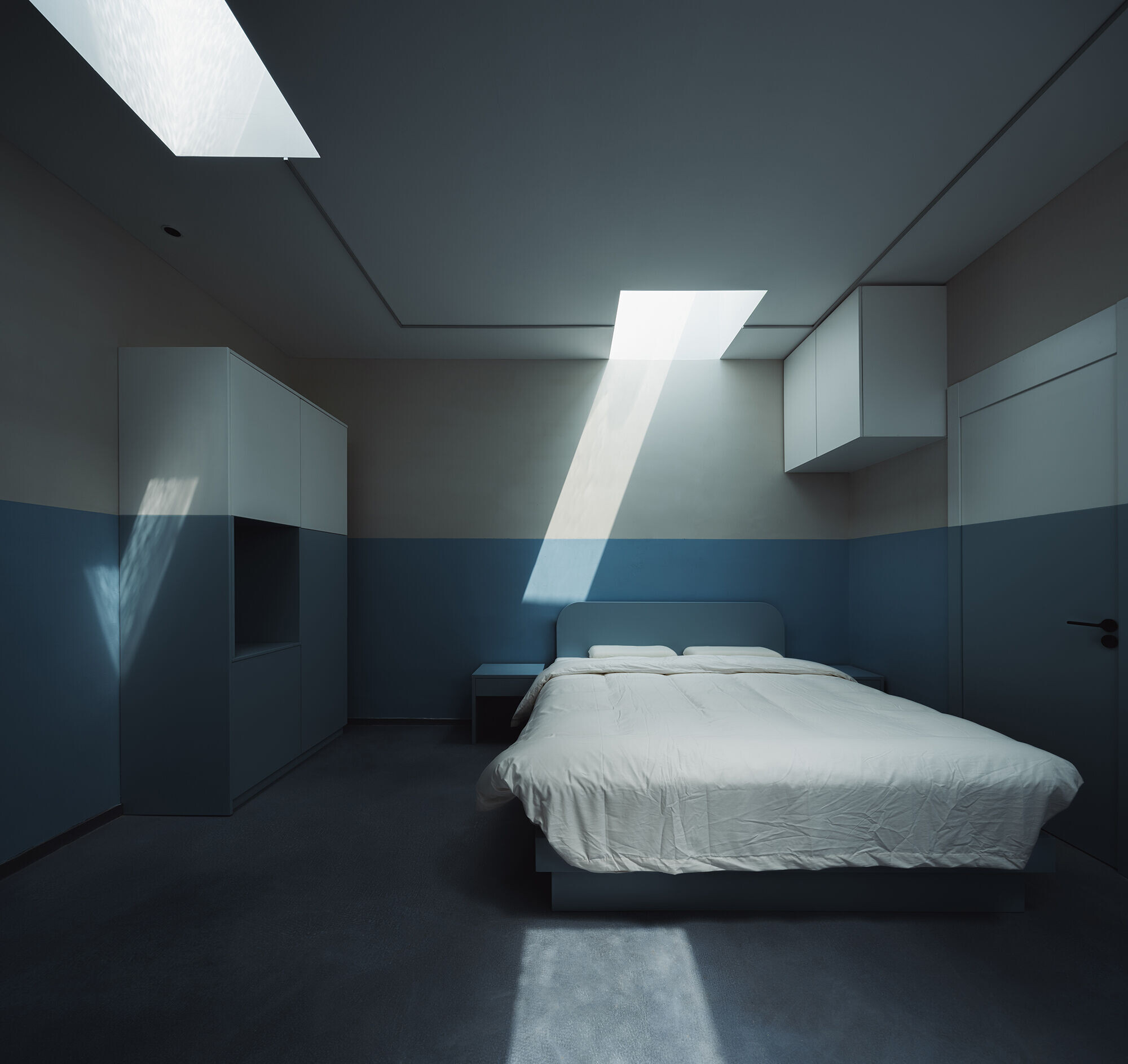
I stand at an empty ground and look at the broken wall and a courtyard gate. I kept the broken wall and courtyard in my design because I want these in my memory too. In addition, it's related to environmental protection, which is that in more and more renovation projects, demolishing and transporting construction waste is a very environmentally unfriendly construction practice. So, let's reduce the demolition as much as we can.

I designed each room as a separate building, there is no corridor connection. Walking out of the room is the outdoor. It’s a typical type in china’s courtyard. From this perspective, I redesigned the traditional building type and reassembling it.The core of this courtyard is the central courtyard. Unfortunately, the fire pit in the center of the courtyard is eliminated because of the building code in China. The historic nature of the fire pit as a kind of aggregation center no longer exists, and even the TV, which barely replaced it, has lost its similar function. Smartphones have completely replaced the centrality of family life. I think the intention of setting up the firepit was to create a site that closes the relationship between strangers who don't know each other, and it doesn’tdeliver.

In “Strangers”, people who don't know each other still need to socialize.
Today's Chinese countryside is extremely inclusive. According to my project architects, the locals not only accept me as a "stranger". They also accept the work of other architects. They welcome architects to change the villages. “Strangers “are quickly accepted by local people.

Material Used:
1. Bricks
2. Concrete
3. Paint
4. Glass
5. Steel Plate
